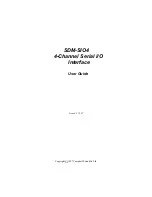
Fault-tolerant automation systems
2.1 Redundant SIMATIC automation systems
S7-400H
26
System Manual, 03/2012, A5E00267695-11
Why fault-tolerant automation systems?
The purpose of using fault-tolerant automation systems is to reduce production downtimes,
regardless of whether the failures are caused by an error/fault or are due to maintenance
work.
The higher the costs of production stops, the greater the need to use a fault-tolerant system.
The generally higher investment costs of fault-tolerant systems are soon recovered since
production stops are avoided.
Redundant I/O
Input/output modules are termed redundant when they exist twice and they are configured
and operated as redundant pairs. The use of redundant I/O provides the highest degree of
availability, because the system tolerates the failure of a CPU or of a signal module. If you
require a redundant I/O, you use the blocks of the "Functional I/O Redundancy" function
block library, see section Connecting redundant I/O to the PROFIBUS DP interface
(Page 177).
















































